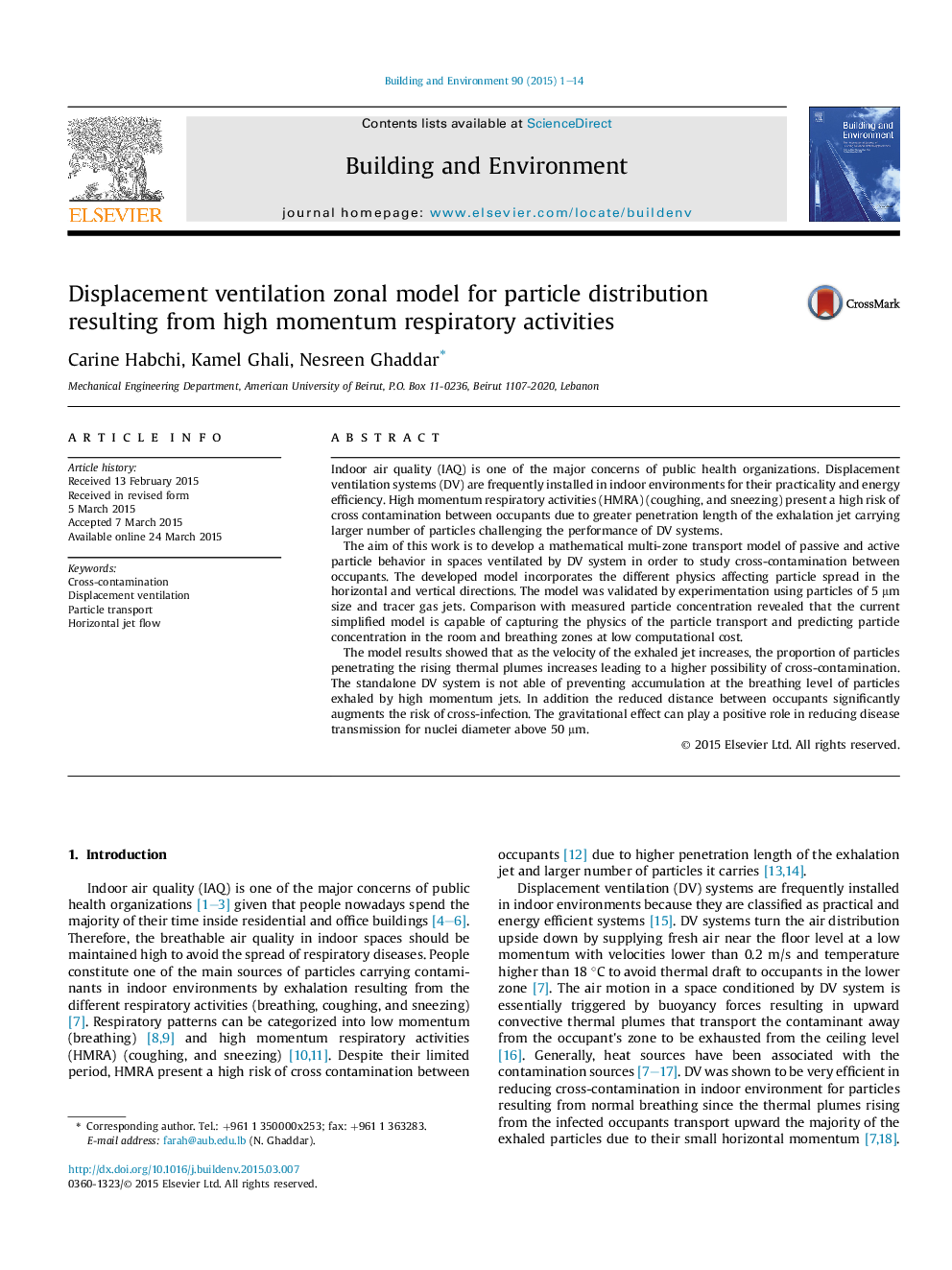| کد مقاله | کد نشریه | سال انتشار | مقاله انگلیسی | نسخه تمام متن |
|---|---|---|---|---|
| 247852 | 502530 | 2015 | 14 صفحه PDF | دانلود رایگان |
• High momentum expiratory jets can penetrate rising human thermal plumes.
• The effectiveness of displacement ventilation (DV) in contaminant removal is degraded.
• Over-designed DV flow rates can't prevent particle accumulation at the breathing level.
• Deposition act as a removal factor for particles diameter above 50 μm.
• Distances lower than 1 m between occupants create dangerous microclimate zones.
Indoor air quality (IAQ) is one of the major concerns of public health organizations. Displacement ventilation systems (DV) are frequently installed in indoor environments for their practicality and energy efficiency. High momentum respiratory activities (HMRA) (coughing, and sneezing) present a high risk of cross contamination between occupants due to greater penetration length of the exhalation jet carrying larger number of particles challenging the performance of DV systems.The aim of this work is to develop a mathematical multi-zone transport model of passive and active particle behavior in spaces ventilated by DV system in order to study cross-contamination between occupants. The developed model incorporates the different physics affecting particle spread in the horizontal and vertical directions. The model was validated by experimentation using particles of 5 μm size and tracer gas jets. Comparison with measured particle concentration revealed that the current simplified model is capable of capturing the physics of the particle transport and predicting particle concentration in the room and breathing zones at low computational cost.The model results showed that as the velocity of the exhaled jet increases, the proportion of particles penetrating the rising thermal plumes increases leading to a higher possibility of cross-contamination. The standalone DV system is not able of preventing accumulation at the breathing level of particles exhaled by high momentum jets. In addition the reduced distance between occupants significantly augments the risk of cross-infection. The gravitational effect can play a positive role in reducing disease transmission for nuclei diameter above 50 μm.
Journal: Building and Environment - Volume 90, August 2015, Pages 1–14
